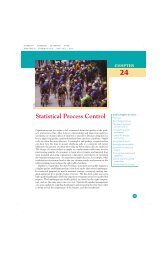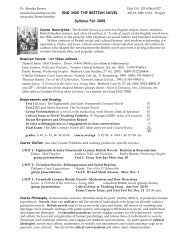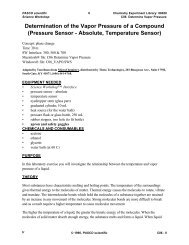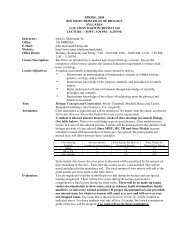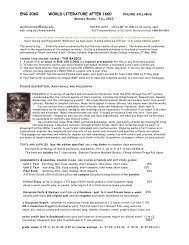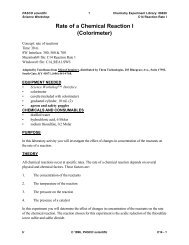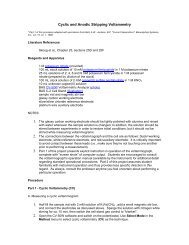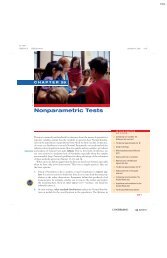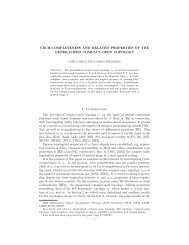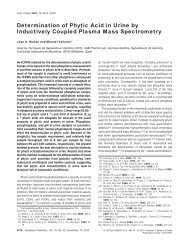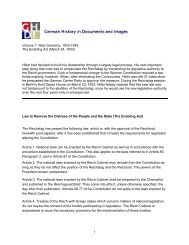CHAPTER 27 ⢠Statistical Process Control
CHAPTER 27 ⢠Statistical Process Control
CHAPTER 27 ⢠Statistical Process Control
Create successful ePaper yourself
Turn your PDF publications into a flip-book with our unique Google optimized e-Paper software.
<strong>27</strong>-38 <strong>CHAPTER</strong> <strong>27</strong> • <strong>Statistical</strong> <strong>Process</strong> <strong>Control</strong><br />
p CHART USING PAST DATA<br />
Take regular samples from a process that has been in control. Estimate the process<br />
proportion p of “successes” by<br />
total number of successes in past samples<br />
p <br />
total number of individuals in these samples<br />
The center line and control limits for a p chart for future samples of size n are<br />
p 11 p2<br />
UCL p 3<br />
B n<br />
CL p<br />
p 11 p2<br />
LCL p 3<br />
B n<br />
Common out-of-control signals are one sample proportion pˆ outside the control<br />
limits or a run of 9 sample proportions on the same side of the center line.<br />
If we have k past samples of the same size n, then p is just the average of<br />
the k sample proportions. In some settings, you may meet samples of unequal<br />
size—differing numbers of students enrolled in a month or differing numbers of<br />
parts inspected in a shift. The average p estimates the process proportion p even<br />
when the sample sizes vary. Note that the control limits use the actual size n of<br />
a sample.<br />
ABSENTEEISM<br />
EXAMPLE <strong>27</strong>.13 Reducing absenteeism<br />
Unscheduled absences by clerical and production workers are an important cost in<br />
many companies. You have been asked to improve absenteeism in a production facility<br />
where 12% of the workers are now absent on a typical day.<br />
Start with data: the Pareto chart in Figure <strong>27</strong>.15 shows that there are major differences<br />
among supervisors in the absenteeism rate of their workers. You retrain all the<br />
supervisors in human relations skills, using B, E, and H as discussion leaders. In addition,<br />
a trainer works individually with supervisors I and D. You also improve lighting<br />
and other work conditions.<br />
Are your actions effective? You hope to see a reduction in absenteeism. To view<br />
progress (or lack of progress), you will keep a p chart of the proportion of absentees.<br />
The plant has 987 production workers. For simplicity, you just record the number who<br />
are absent from work each day. Only unscheduled absences count, not planned time<br />
off such as vacations. Each day you will plot<br />
pˆ <br />
number of workers absent<br />
987<br />
You first look back at data for the past three months. There were 64 workdays in these<br />
months. The total of workdays available for the workers was<br />
164219872 63,168 person-days



